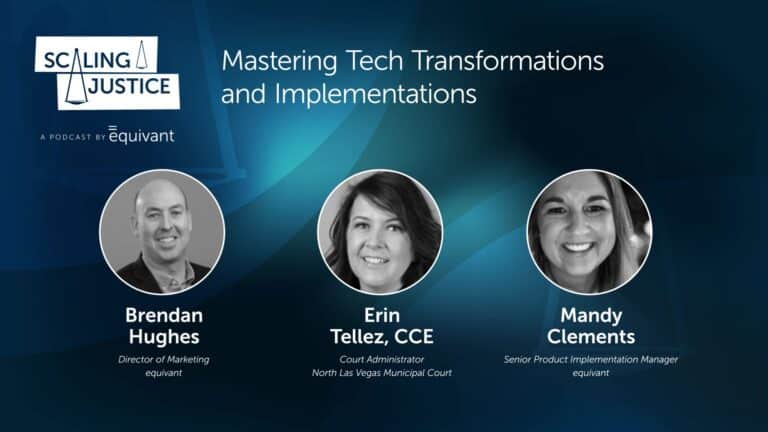You place an order on ebay.com. Your product is shipped out and delivered. When you open the box, you find the product you ordered is damaged. Now you have to report the damage and request a new product be shipped in its place. That whole process is done online and is a form of online dispute resolution (ODR). Whether you realized it or not, ODR has been around for a while and was born during the boom of e-commerce but has since gained significant momentum in the justice industry.
How does this relate to courts? Courts are discovering the positive impact ODR can have on their caseload and overall efficiency. But what does ODR adoption look like? In this post, we explore what ODR is, the cases that it best supports, and the benefits to both the court and community.
ODR is Not Virtual Court but Uses Technology to Bring Disputing Parties Together
Online Dispute Resolution is technology assisted dispute resolution that is not always one hundred percent automated and usually involves a professional mediator or arbitrator. ODR is sometimes confused with virtual court, which involves showing up to a trial via Zoom or another virtual platform.
The purpose of implementing ODR is to bring two disputing parties together virtually and provide a structured environment that may or may not include a legal professional. ODR is made up of a collection of technologies that support the disputing parties so that a resolution can be reached virtually.
Benefits of ODR to Courts and Communities
The justice industry tends to be slower to adopt new technologies, primarily because of security concerns related to the sensitive data and personally identifiable information (PII) they store. ODR is a secure way to resolve disputes, and many courts have realized that the benefits are significant.

Deciding if ODR is Right for Your Court
ODR tends to be well suited for handling cases that are transactional in nature (i.e. disputes over money, land, etc.) So far, it’s been used most frequently to support traffic, small claims, and family cases. Many courts are even starting to require that certain cases go through mandatory mediation before going to court. By requiring mediation, cases that experience high emotion like divorce/family law have the opportunity to separate from one another and start working towards a resolution. In many cases, a resolution is reached, and disputing parties don’t have to go to court. In the end, this saves all stakeholders time and money.
When it comes to adopting new technology, ODR has one of the lower barriers of adoption for courts because it is completely cloud-based. If you decide that it’s right for your court, the most important thing to do is to define what’s involved in your workflow processes and then choose the appropriate partners. You’ll need to select ODR technology that will integrate with your case management system. In addition, you’ll need to decide whether your court will provide mediators or if partnering with an organization like the American Arbitration Association would better meet your needs.
If your court decides to invest in ODR, aside from the benefits discussed above, your goal should be to provide a seamless user experience for all stakeholders. If implemented correctly, the transition to ODR should be smooth for everyone involved.
If you’re still hesitant about adopting ODR, contact us and we’ll walk through the benefits to your court specifically.





